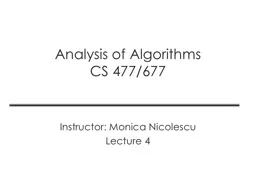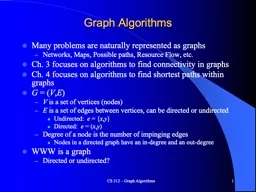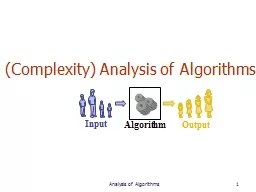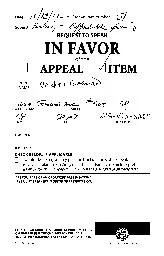PPT-Analysis of Algorithms CS 477/677
Author : calandra-battersby | Published Date : 2019-06-29
Instructor Monica Nicolescu Lecture 4 CS 477677 Lecture 4 2 Methods for Solving Recurrences Iteration method Substitution method Recursion tree method Master method
Presentation Embed Code
Download Presentation
Download Presentation The PPT/PDF document "Analysis of Algorithms CS 477/677" is the property of its rightful owner. Permission is granted to download and print the materials on this website for personal, non-commercial use only, and to display it on your personal computer provided you do not modify the materials and that you retain all copyright notices contained in the materials. By downloading content from our website, you accept the terms of this agreement.
Analysis of Algorithms CS 477/677: Transcript
Download Rules Of Document
"Analysis of Algorithms CS 477/677"The content belongs to its owner. You may download and print it for personal use, without modification, and keep all copyright notices. By downloading, you agree to these terms.
Related Documents














